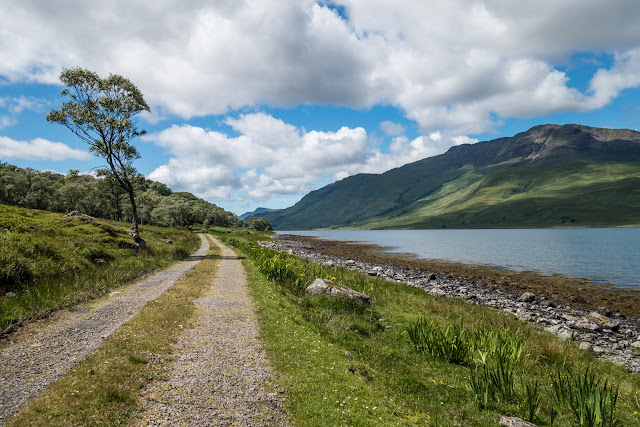Hunstanton and Snettisham in Norfolk
One of the most eye catching things about Hunstanton in Norfolk, are the cliffs. The best time to see them is in a late evening summer evening - and we had just such conditions for these images.

The famous red and white striped cliffs are an eye-catching attraction. Why are the cliffs striped? The stripes in the cliffs are caused by layers of different coloured rock. The main layers are Carrstone and also Chalk.
Carrstone is the brown layer and consists of sandstone - sand cemented together by iron oxide (rust). In places where the cement is stronger, the rock is darker and less crumbly. There are no fossils in this layer apart from a little fossilised wood.
The red and white chalk is made of limestone. Limestone forms in warm tropical climates, which suggests that Hunstanton climate was once warmer than it is today. The colour of the red chalk is due to iron staining.
Patterns in the sand, made as the sea retreated.
On the famous cliffs is the imposing Hunstanton Lighthouse. A lighthouse has been here since 1665, but the present lighthouse was built in 1840, although it ceased operations in 1922 and became a private residence.
The wall is generally referred to as the Chapel of St Edmund. It existed in 1272 but was already a ruin by the Reformation. What survives is basically the south doorway, apparently Norman. You can make out the outline of the south wall of nave and chancel.
More dramatic is the lighthouse beyond it. I tried taking the photograph with the lighthouse beside the ruin, and then with the lighthouse through the south doorway - this is my effort above.
St. Mary's Church in the village of Snettisham has a 14th-century, 172-foot (52 m) high spire. Claimed by some to be "perhaps the most exciting decorated church in Norfolk".
It is certainly striking as you approach it. As it was locked, and is most of the time apparently, we did not get a chance to see inside.
Billy Goat Gruff - what a beard!










Comments